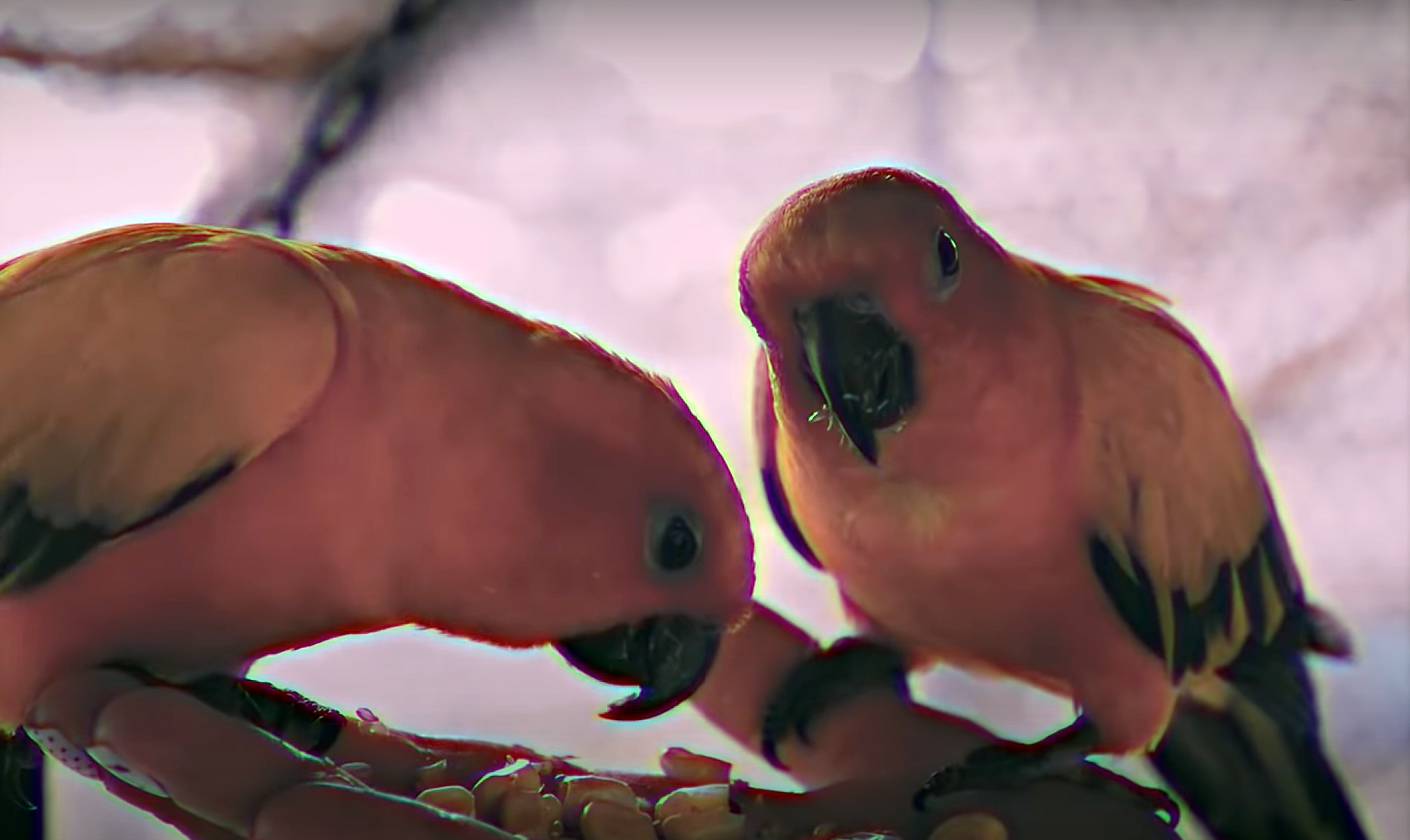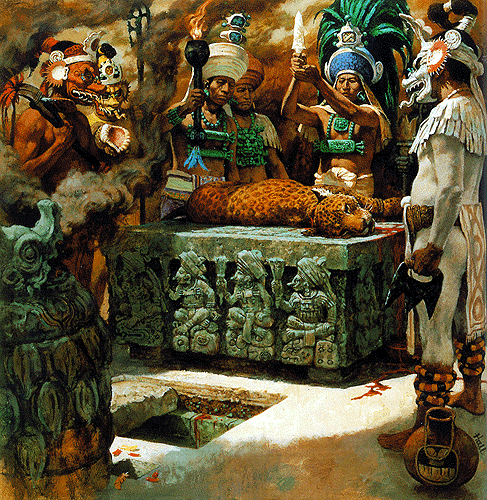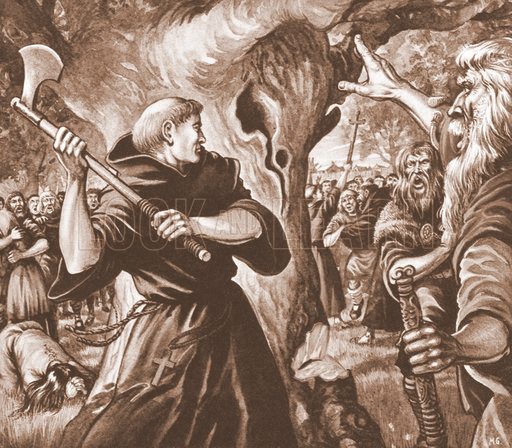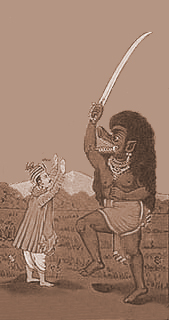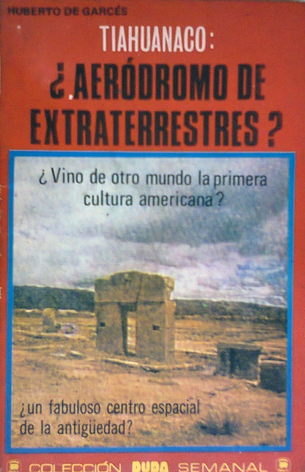You, who are one of us—sons and fathers of the Strong and Beautiful—, look around you without prejudice and passion, and say what you see! From one end of the earth to the other, the strong are retreating before the weak, armed with ingenious malice; the beautiful, before the ungainly, the deformed, the ugly, armed with deception; the healthy, before the sick, armed with recipes for combat taken from the demons with whom they have made a pact. The giants give way to the dwarfs, holders of divine power usurped through sacrilegious research. You see all this more clearly than ever since the disaster of 1945.
But don’t think that this dates from 1945. Certainly not! The collapse of the Third German Reich and the persecution of the Religion of the Strong, which has been raging ever since, are but the consequence of a desperate struggle, as old as the fall of man and the end of the ‘Age of Truth’. They are the recent phases of a gradual and inexorable loss of ground, which has been going on for millennia, and is only more apparent since our fruitless effort to stop it.
______ 卐 ______
Editor’s note: As I said yesterday in the comments section, Savitri lived at a time when the real history of Christianity was still unknown. Had she known it, she wouldn’t have needed to dip into Hindu mythology to speculate about a purported decadence of many thousands of years old. Occam’s razor is applicable here, and we can point to Christian ethics, even in its secular form, as the inversion of values that in our day has culminated in the West’s darkest hour.
______ 卐 ______
Consider the trees. Among the Strong, they are the oldest. They are our elder brothers: old kings of Creation. For millions of years, they alone possessed the Earth. And how beautiful was the Earth in the time when, aside from some giant insects and the life born amidst the oceans, it nourished only them!
The Gods know what enthusiasm seized me, on my return to Germany in 1953, at the sight of the resurrected industries of the Ruhr basin! In every cloud of nitrogen peroxide that billowed in fiery volutes from the chimneys of rebuilt factories, I greeted a new and victorious challenge to the infamous Morgenthau plan. And yet… an image haunts and fascinates me: that of the Ruhr basin at the time when the future coal which, along with iron, makes it rich today, existed ‘in potential’ in the form of endless forests of tree ferns.

I think I can see them, these fifty-metre-high ferns, endlessly crowded together, competing in their strength in their push towards the light and the sun. It was night between their innumerable shafts, so thick was the evergreen ceiling of their entangled leaves: a humid night, heavy with the vapours arising from the warm blackish mud in which their roots were immersed; a night that the wind, blowing through the gigantic foliage, filled with a harmonious wailing, or that the torrential rains filled with a din. Everywhere one finds coal mines today such forests then extended.
But there is, for me, an even more nostalgic image. It is that of the forest of many species, populated by colourful birds, reptiles beautifully marked with brown, pale yellow, amber and ebony, and mammals of all kinds—especially felines: the most beautiful of all living creatures—, the forest of the hundreds of millennia before man appeared on our planet, and the forest of the time when man, few in number, was not yet the harmful beast he has become. The domain of trees was then almost everywhere. And it was also the domain of animals. It included the domain of the oldest and most beautiful civilisations. And man, to whom the dream of ‘dominating Nature’ and overturning its balance for his benefit would then have seemed absurd and sacrilegious, found his numerical inferiority normal. In one of his most suggestive poetic evocations of ancient India, Leconte de Lisle has one of his characters say:
I know the narrow, mysterious paths
That lead the river to the nearby mountains.
Large tigers, striped and prowling by the hundred… [1]
In the hot and humid forests of the Ganges (or Mekong) there were tigers, leopards and elephants. In the north of Asia and Europe, it was aurochs and wolves, by the thousands, by the millions. The first hunters—the first herders, rivals of the four-legged predators—certainly killed some of them, to keep the flesh of the domesticated herds for themselves. But from the boundless forest others emerged. The natural balance between the species had not yet been broken, nor was it to be broken for long. It was not until the forest, or the savannah, definitely retreated before man when ‘civilisation’ encroached on it without interruption.
For centuries, however, man was destined to remain confined to very small areas. In ancient times, in Egypt as well as in Assyria, Mesopotamia, Syria, North Africa and even in Southern Europe, lions were found within a few kilometres of cities. All the accounts of the ancients, from those reported in the Bible to those of the adventures of Androcles (how recent, in comparison!) bear witness to this. Unfortunately, these beasts were hunted, and there is abundant evidence of this in the written and sculpted testimonies. Personally, I have always been outraged when reading the inscription that relates the success of the young Amenhotep III, who supposedly killed ‘one hundred and four’ of these royal beasts in a single hunt. And the famous bas-reliefs in the Oxford Museum, which, with that frightening realism of which Assyrian art has the greatest secret, represent Assurnasirpal and his retinue piercing with arrows a whole army of lions—of which some, their backs broken, twist and seem literally to howl in pain—inspire me to nothing less than a burning hatred of man.
And yet… I must admit that, no more at the dawn of the 14th century than during the 9th before the Christian era, this primate had not yet become, on the scale on which it was soon to be, the scourge of the living world. It hunted, it is true, as did other predators. And it had the arrow which strikes from afar, instead of the honest claw and tooth, which only reach up close. But he didn’t exterminate whole species as it was destined to do later, and like no other beast of prey did.
The forest, the endless savannah, the desert—the space which he couldn’t occupy entirely, and in which he was not even able to make his presence felt in a more or less permanent way—remained the free, if not inviolate, domain of non-human life. No civilisation had yet monopolised for the benefit of ‘man’ all the territory on which it flourished. Egypt itself, whose people were by far the most prolific in antiquity, kept, in addition to its luxuriant palm groves, its fauna of lions, crocodiles and hippopotami. And, what is more, thanks to its theriomorphic representations of the divinity, and especially thanks to the pious love with which it surrounded certain animals—such as the innumerable cats, fed and pampered by the priestesses of the Goddess Bastet[2]—it maintained with this fauna a link of a more subtle and stronger order, comparable to the one that still exists today between the Hindu and the Cow, certain monkeys and certain snakes, among other symbolic animals.
It would have seemed to a superficial observer that, despite the hunting, the sacrifices, and the extensive use of wood in the construction of houses as well as ships, the animal species and the forest species could count on an indefinitely prosperous future.
However, even at that relatively early date, man had become ‘the only mammal whose numbers continue to increase’.[3] In other words, the balance that had been maintained for so long between all living species, including man, had been upset in favour of the latter for several centuries.
_________
[1] Leconte de Lisle, ‘Çunacépa’ (Poèmes Antiques).
[2] These cats were mummified after their death. Hundreds of thousands of them have been found in the necropolises where they had been deposited.
[3] ‘der einzige Säuger, der sich in ständiger Vermehrung befindet’ (Tier, 11th year, No. 5, page 44. Article ‘Die Uberbevölkerung droht als nahe Weltkatastrophe’).
 This act of heroism by a very young child could not, alas, give the unfortunate beast back its lost home. But it has symbolic value. It proclaims, in its tragic simplicity, that in this world of the Dark Ages, almost at its end, where everything belongs to man, and where man belongs more and more to the Forces of the Abyss, it is better to die than to be born. It is similar, in its essence, to all the glorious suicides motivated by an intense disgust with the environment that was once respected if not admired, to the sudden revelation of one’s true vileness, for all vileness—especially all treason—is cowardice. It is similar to all similar acts of heroism—suicides or, sometimes, murders requiring even more despair than suicide—motivated by the awareness that the inevitable future, the consequence of the present, can only be hell.
This act of heroism by a very young child could not, alas, give the unfortunate beast back its lost home. But it has symbolic value. It proclaims, in its tragic simplicity, that in this world of the Dark Ages, almost at its end, where everything belongs to man, and where man belongs more and more to the Forces of the Abyss, it is better to die than to be born. It is similar, in its essence, to all the glorious suicides motivated by an intense disgust with the environment that was once respected if not admired, to the sudden revelation of one’s true vileness, for all vileness—especially all treason—is cowardice. It is similar to all similar acts of heroism—suicides or, sometimes, murders requiring even more despair than suicide—motivated by the awareness that the inevitable future, the consequence of the present, can only be hell.